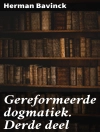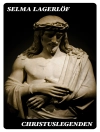My Bondage and My Freedom Frederick Douglass – My Bondage and My Freedom is an autobiographical slave narrative written by Frederick Douglass, an expansion of his earlier Narrative of the Life of Frederick Douglass, discussing in greater detail his transition from bondage to liberty. Following this liberation, Douglass, a former slave, went on to become a prominent abolitionist, speaker, author, and publisher.
关于作者
Frederick Douglass (né Frederick Augustus Washington Bailey) was born a slave in the state of Maryland in 1818. After his escape from slavery, Douglass became a renowned abolitionist, editor and feminist. Having escaped from slavery at age 20, he took the name Frederick Douglass for himself and became an advocate of abolition. Douglass traveled widely, and often perilously, to lecture against slavery.His first of three autobiographies, The Narrative of the Life of Frederick Douglass: An American Slave, was published in 1845. In 1847 he moved to Rochester, New York, and started working with fellow abolitionist Martin R. Delany to publish a weekly anti-slavery newspaper, North Star. Douglass was the only man to speak in favor of Elizabeth Cady Stanton’s controversial plank of woman suffrage at the first women’s rights convention in Seneca Falls, New York, in 1848. As a signer of the Declaration of Sentiments, Douglass also promoted woman suffrage in his North Star. Douglass and Stanton remained lifelong friends.In 1870 Douglass launched The New National Era out of Washington, D.C. He was nominated for vice-president by the Equal Rights Party to run with Victoria Woodhull as presidential candidate in 1872. He became U.S. marshal of the District of Columbia in 1877, and was later appointed minister resident and consul-general to Haiti. His District of Columbia home is a national historic site. D. 1895.












